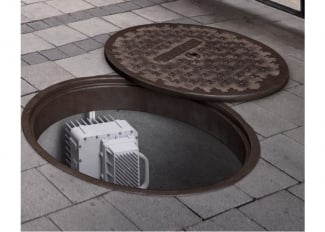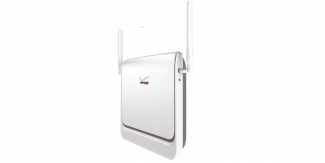AT&T unveiled its Project Velocity IP (VIP) in 2012, outlining a plan to deploy more than 40,000 small cells by the end of 2015. Since then, every other major carrier has begun to pursue small cells as they work to densify their networks and ramp up capacity as affordably as possible.
Still, the total number of small nodes in operation in the U.S. currently stands at a mere 30,000, according to a recent estimate from MoffettNathanson. So while small cells continue to garner a significant amount of attention, the market thus far has failed to live up to expectations.
AT&T said in March 2015 that it would pull in the reins on its small cell initiative, saying its acquisition of Leap Wireless lessened its need for new transmitters. But other carriers have had to scale back their small cell deployments as well, at least temporarily. And like so many other spaces in wireless, that disconnect has much more to do with the difficulties in creating a new market than it does with developing technologies.
‘More hype than substance’
"We continue to believe small cells and DAS are more hype than substance at this juncture, and while revenue from these segments should grow, we believe it will be difficult to ever reach equivalent margins of the macro tower segment," Pacific Crest wrote in a research note summarizing June’s Wireless Infrastructure Association conference in Dallas. "It appears that the wireless carriers are, at least to a certain extent, using the carrot of macro amendments and new colocation agreements in hopes to drive better contractual pricing and revenue escalators.’
Carriers have traditionally built out their networks through macrosites, of course, and that market has evolved since the first analog towers came online in the U.S. three decades ago. Companies such as Crown Castle and American Tower have emerged as major players, and their business processes have become streamlined and simplified over the years.
Small cells offer several advantages over towers, but they also present significant new challenges for those looking to deploy them. “The problem with small cells is that they’re not like a tower where there’s a known process,” said Iain Gillott of iGR. “There’s an established model there for a tower. That does not exist for a small cell. It’s as simple as that.”

Small cells are designed primarily for use in urban areas and can be installed nearly anywhere, from rooftops to existing street lights and traffic signs. Ericsson has even teamed with wireless antenna maker Kathrein to develop an in-ground system that transmits signals through a manhole cover.
And unlike towers, the range of small cells is limited to anywhere from roughly 10 meters to several hundred meters, so widespread deployments require thousands of little deals with building owners and other stakeholders. And the industry has yet to develop a simple and efficient way to connect carriers and their network partners with landowners who have space to sell.
Permitting problems
Similarly, much work has to be done to create processes for permitting and establishing rights of way in the urban areas where small cells can be so valuable. Perhaps most notably, Sprint’s effort to deploy as many as 70,000 of the transmitters across the country has stalled somewhat due to troubles its partner Mobilitie had obtaining permits. And to exacerbate the red-tape headaches, some vendors have reportedly drawn the wrath of municipalities by failing to secure the appropriate permits before installing small cells.
In some cases, that may have led to a backlash from city workers, further delaying buildouts. The entire process required to install a single cell can now take two years or more, carriers have complained, rather than several months.
"Many markets face incremental challenges driven by the backlash from the aggressive tactics of Mobilitie," Walter Piecyk of BTIG wrote in a research note in July. "We previously noted how the planning commission in San Francisco voted in favor of a code amendment to deal with the proliferation of small cells better and insure their ability to force operators to clean-up shoddy work by requiring permit renewals after 10 years. We suspect that trend to continue in other towns and cities throughout America.”
Indeed, the FCC took a significant step toward addressing some of these challenges a few weeks ago when it finalized new rules designed to make it easier for wireless carriers and others to deploy small cells. But much work must still be done on the state and local level to pave the way for smooth deployments that also protect property rights and neighborhood covenants.
"And to be clear, Mobilitie shouldn't shoulder all of the blame," Piecyk continued. "As we continue to peel the onion, we are finding examples where Crown Castle's siting practices are aggravating local communities as well...."
The logistics of wire
While small cells can be installed in a wide variety of places, they often require the installation of wires to be fully effective. Many use fiber for backhaul to attach to the network, although in some cases microwave connections can be used. And they need a reliable and consistent source of power.

an LTE small cell solution for the
enterprise earlier this year.
So while hanging a small cell on, say, a light pole sounds simple, it can be a logistical nightmare. Connecting the pole to both the power grid and the network could require installers to dig up streets and sidewalks, which (again) requires permitting and perhaps other city approvals. And although some locations are already wired for power, existing electrical systems might not be sufficient keep small cells running. HVAC systems on building rooftops provide inconsistent power, for instance, varying based on heating and cooling needs at specific times. Other systems don’t always provide the kind of always-on power necessary to meet the 24/7 demands of wireless users.
'A limited market'
In addition to all those logistical challenges, small cells simply aren't the network panacea that some once believed they would be, Joe Madden of Mobile Experts said. They can help boost capacity and improve coverage over small locations where demand for mobile data is high, but those scenarios account for a small fraction of the overall traffic seen by major U.S. carriers nationwide.
"I do think it's going to be a limited market; between 5 million and 10 million units a year -- not 100 million," Madden said. "It's only big enough to support a few (small cell) vendors a year, and one or maybe two chipset vendors."
Indeed, the market has already seen a few major chip vendors retreat from small cells, Madden noted. Demand for small cells may increase among businesses and landlords looking to buy and install transmitters themselves to improve coverage and capacity for their employees and tenants, he said. And the emergence of 5G could eventually increase opportunities for small cell vendors to deliver high-data wireless services to apartment buildings, for instance, or office buildings. But those opportunities will be limited, and demand in those areas isn't likely to take off any time soon.
A matter of price… and time
One reason carriers are attracted to small cells is that they’re significantly cheaper than macrosites. As often happens in new markets, though, small cell vendors are struggling to bring their prices down to the point where operators can deploy them cost-effectively on a large scale. The total price of an average small cell is in the neighborhood of $35,000, although some can cost as much as $65,000. Prices continue to fall, but that will have to continue for vendors to be able to reach the $20,000 to $25,000 price point that may be necessary for widespread carrier rollouts.
Meanwhile, the pieces are slowly falling into place for small cells to finally gain real traction as carriers begin to plot their 5G strategies. Vendors continue to file requests and applications to ramp up their deployments, and municipalities, power utilities and others are beginning to lay the foundation for future growth by considering small cells when they lay cable and install light poles and other equipment. We aren’t likely to see a surge in small cell rollouts in the near future, and they may end up serving a relatively small fraction of the market, primarily high-population areas. But they will be necessary to meet the ever-increasing demands of mobile users as we transition to 5G, Gillott said.
“If it takes about two years to get permitting, and if you put a bunch of requests in beginning of this year, or the end of last year, looking at middle of ’17” for those cells to come online, he said. So while deployments may eventually accelerate significantly, that wouldn't necessarily indicate a sudden increase in demand or spending. Instead, it would be like a spigot being opened more fully. “It does look like a little hockey stick, but really it’s not because everything’s in the works.”
“Having said all of that, we as an industry cannot get to 5G without small cells,” Gillott continued. “I don’t believe you can do it. You cannot get the cell density you need, you can’t get the capacity you need, just with towers.”